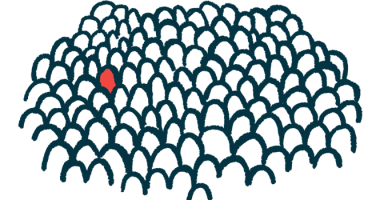New UROS Mutation Found as Cause of CEP in Elderly Woman

A new mutation in the UROS gene, combined with another previously reported mutation, was identified as the cause of congenital erythropoietic porphyria (CEP) in an elderly Japanese woman, according to a recent case report.
Researchers found the new mutation with genetic testing, following a porphyrin test that showed elevated levels in the woman’s red blood cells.
“To prevent delayed diagnosis, clinicians should be aware of CEP and perform genetic diagnosis in patients with repeated erythema [red patches of skin] and pigmentation on sun-exposed areas,” the team wrote.
The case report, “Novel mutation in the UROS gene causing congenital erythropoietic porphyria in an elderly Japanese female,” was published as a letter to the editor in The Journal of Dermatology.
CEP, also known as Günther disease, is the rarest form of porphyria, with only about 150 cases reported worldwide. It is caused by mutations in either the UROS or GATA1 genes, which result in an overproduction of molecules called porphyrins.
Porphyrin buildup on the surface of the skin then leads to severe light sensitivity and infections that can cause the loss of fingers and facial features. The condition is most often seen in infancy.
Here, a team of Japanese researchers reported the case of an 88-year-old woman treated at the hospital, who had a history of light sensitivity that had emerged in early childhood.
As a result, she had experienced erythema, or skin reddening, in sun-exposed areas and blistering on her hands. Beginning at age 80, the woman began experiencing hair loss.
She had no notable family history of disease, and previous medical examinations had not arrived at a conclusive diagnosis.
During an exam at the hospital, clinicians observed that the woman had cracked and hardened skin on her hands, and hair loss that led to scarring and damage to the hair follicles.
Researchers performed an erythrocyte porphyrin test, which measures the levels of porphyrins in red blood cells, or erythrocytes.
The test revealed the patient had elevated levels of protoporphyrin — 353 micrograms per deciliter (mcg/dL), when the normal range is 30–86 mcg/dL — as well as increased levels of coproporphyrin (19 mcg/dL; normal range: less than one ug/dL).
The woman also had moderately low hemoglobin levels, indicating an insufficient supply of oxygen from red blood cells to tissues throughout the body, or anemia. Of note, hemoglobin is the protein in red blood cells that is responsible for oxygen transport.
Genetic testing revealed two mutations in the UROS gene. While one of the mutations (c.184A>G) had been seen before, the other had never been identified (c.629delA). The woman was diagnosed with CEP.
Different genetic mutations contribute to the relative severity of the disease. Previous reports have suggested that c.184A>G does not significantly affect UROS activity. Researchers determined that the new mutation, c.629delA, was likely contributing more significantly to the woman’s symptoms, which were considered moderate to severe.
Levels of sun exposure also can influence the degree of symptom severity. For this reason, the patient was advised to wear sunscreen, long sleeves, and a hat when outdoors.
“In summary, we described an elderly patient who had moderate CEP due to a novel mutation, c.629delA, in the UROS gene,” the researchers wrote.







